Resource Management Software | Employee Performance Tracking Software
Blog
From Data Overload to Insights: How Centralized Dashboards Revolutionize Decision-Making in Mid-Scale Organizations

In today’s data-driven business environment, organizations have access to more information than ever before. Yet, for many mid-scale companies, managing and interpreting this data can lead to data overload rather than clarity. With numerous tools and reports, managers often struggle to distill meaningful insights from scattered information, slowing down the decision-making process.
A powerful solution to this challenge is the centralized dashboard. By consolidating data from diverse sources into a single, intuitive interface, centralized dashboards provide managers in mid-scale organizations the visibility they need for quick, informed decisions. This blog explores how centralized dashboards transform data overload into actionable insights, enabling efficient, data-driven decision-making across various areas of business.
- The Challenge of Data Overload in Mid-Scale Organizations
Mid-scale companies often work with limited resources but deal with the complexities of larger firms. As they grow, so does the amount of data generated—from employee engagement metrics and project timelines to financial reports, recruitment data, and resource utilization. When this information is spread across different systems, it becomes challenging for managers to draw meaningful insights without wading through a vast sea of figures and reports.
Some common challenges of data overload include:
- Fragmented Information: Data exists in silos across various platforms, making it difficult to get a cohesive view of operations.
- Delayed Decision-Making: Manually gathering and verifying data slows down the decision-making process.
- Inconsistent Metrics: Different departments may use varied metrics, leading to discrepancies in performance evaluation.
- Reduced Focus: With excessive data, managers can lose sight of key metrics essential to the business.
This is where a centralized dashboard becomes essential, integrating all relevant data, including applicant tracking and recruitment, and empowering managers to make clear, actionable decisions swiftly.
- Centralized Dashboards: The Solution to Streamlined Data Visibility
A centralized dashboard consolidates data from different sources, such as Human Resource Management System (HRMS), project management tools, financial databases, resource management platforms, and Application Tracking System (ATS). Dashboards are customizable, allowing managers to focus on the most relevant information for their goals. Here’s how centralized dashboards address data overload and improve decision-making:
- Unified Data Access: Managers can view all essential data in one place, eliminating the need to switch between systems or spend time aggregating information manually.
- Real-Time Insights: Centralized dashboards provide real-time data updates, ensuring managers always have the latest information to make timely decisions.
- Customizable Views: Managers can tailor the dashboard to prioritize metrics like project progress, employee performance, recruitment data, or resource allocation, making it easier to monitor critical business areas.
- Enhanced Collaboration: When all data is available in one dashboard, it encourages transparency and cross-departmental collaboration, as everyone can access the same data and make decisions aligned with organizational goals.
With these features, centralized dashboards simplify raw data into actionable insights, empowering managers to make faster, more informed decisions.
- Driving Actionable Insights with Enhanced Data Visibility
Centralized dashboards provide managers with enhanced data visibility, transforming data into actionable insights and enabling smarter, faster decision-making:
- Identifying Trends and Patterns: Dashboards make it easy to spot trends and patterns in data. Managers can track resource utilization, financial performance, recruitment rates, and project timelines over time, allowing them to address potential bottlenecks or inefficiencies before they escalate.
- Measuring Key Performance Indicators (KPIs): With centralized dashboards, managers can focus on KPIs aligned with company objectives, such as employee productivity, project completion rates, or recruitment efficiency. This data-driven approach allows for proactive problem-solving as managers can address issues as soon as they arise.
- Forecasting and Planning: Dashboards enable better forecasting and planning by providing a holistic view of data. For instance, consistent patterns in resource allocation, recruitment needs, or expense trends can help managers plan for future project requirements and budget adjustments. These forecasting capabilities offer a competitive advantage, enabling mid-scale organizations to respond quickly to changes.
- Data-Driven Resource Allocation: Enhanced data visibility allows managers to make strategic decisions about resource allocation. Rather than relying on intuition, managers can use data to allocate resources where they are most needed, optimizing productivity and minimizing waste.
Through these insights, centralized dashboards empower managers to create proactive, data-backed strategies that foster a resilient organization capable of adapting to change.
- Streamlining Decision-Making for Managers
For managers in mid-scale organizations, time is a valuable asset. Centralized dashboards streamline decision-making by reducing the time spent on data gathering and verification. Here’s how dashboards simplify the decision-making process:
- Simplified Reporting: Dashboards generate real-time visual reports that are easy to interpret, eliminating the need for manual report creation. Managers can review these reports at a glance, enabling quicker, more efficient decision-making.
- Quick Access to Critical Data: Dashboards provide instant access to essential data, allowing managers to respond promptly to issues. Whether it’s addressing a productivity dip, meeting a recruitment target, or reallocating resources, managers have the information they need at their fingertips.
- Reduced Cognitive Load: The simplicity of a centralized dashboard reduces the mental effort required to sift through extensive data, allowing managers to focus on strategy rather than processing data. By consolidating information, dashboards alleviate cognitive overload and help managers concentrate on the most important metrics.
- Automated Alerts and Notifications: Many dashboards include automated alerts, notifying managers when key metrics reach specific thresholds. This ensures that managers can act on emerging issues immediately, without needing to constantly monitor every data point.
By providing these tools, centralized dashboards enable managers to act swiftly on insights, focusing on strategic decisions rather than getting bogged down in data.
- Real-World Impact of Centralized Dashboards in Mid-Scale Organizations
The value of centralized dashboards on decision-making is best demonstrated through real-world applications across different functions. Here’s how dashboards bring value to various areas within mid-scale organizations:
- Human Resources: Dashboards in HR provide insights into employee performance, engagement levels, and attendance patterns. Managers can track trends in turnover rates, absenteeism, and productivity, helping to implement targeted strategies for employee retention and engagement.
- Project Management: Project managers can monitor project timelines, budget adherence, and resource allocation. Centralized visibility helps ensure that projects remain on track, allowing managers to identify potential delays or resource constraints before they impact project outcomes.
- Finance: Financial dashboards consolidate expense tracking, budget forecasts, and profitability metrics. Finance managers can assess the organization’s financial health quickly, ensuring budgets are allocated efficiently and financial targets are met.
- Resource Management: For companies relying on resource-heavy projects, dashboards provide insights into real-time resource allocation, enabling managers to assign tasks effectively based on employee availability, skill set, and workload. This optimizes resource utilization, preventing overuse or underutilization.
- Application Tracking and Recruitment: Dashboards for recruitment provide visibility into hiring stages, candidate feedback, and time-to-hire metrics, helping HR managers streamline hiring processes and monitor recruitment efficiency.
By empowering managers across various functions to make data-informed decisions, centralized dashboards help align organizational objectives with department goals, driving overall success.
- Choosing the Right Dashboard for Your Organization
When selecting a centralized dashboard, it’s essential to consider factors such as integration, customization, and scalability. Here’s what mid-scale organizations should look for:
- Integration Capabilities: The dashboard should seamlessly integrate with existing tools, such as HR, project management, financial systems, and recruitment platforms, to ensure a smooth flow of data from all sources.
- User-Friendly Interface: A user-friendly interface is crucial, especially for organizations with diverse teams. Clear data visualization and intuitive navigation are essential for facilitating quick and easy access to information.
- Scalability: As organizations grow, so will their data requirements. Choosing a dashboard that can scale with the company’s needs ensures long-term value and allows the dashboard to grow alongside the business.
By selecting the right dashboard, mid-scale organizations can fully realize the benefits of centralized data visibility, streamlining decision-making for sustainable growth and operational efficiency.
Conclusion
For mid-scale organizations, centralized dashboards represent more than a data management tool—they are a transformative solution to the challenges posed by data overload. With unified data access, real-time insights, and customized reporting, dashboards enable managers to focus on strategic decision-making rather than data collection.
In transitioning from data overload to actionable insights, centralized dashboards become an essential cornerstone, providing clear visibility into critical information and empowering managers to make data-backed decisions. With centralized dashboards, mid-scale organizations can harness data as a strategic asset, positioning themselves for growth, resilience, and agility in an ever-evolving business landscape.

